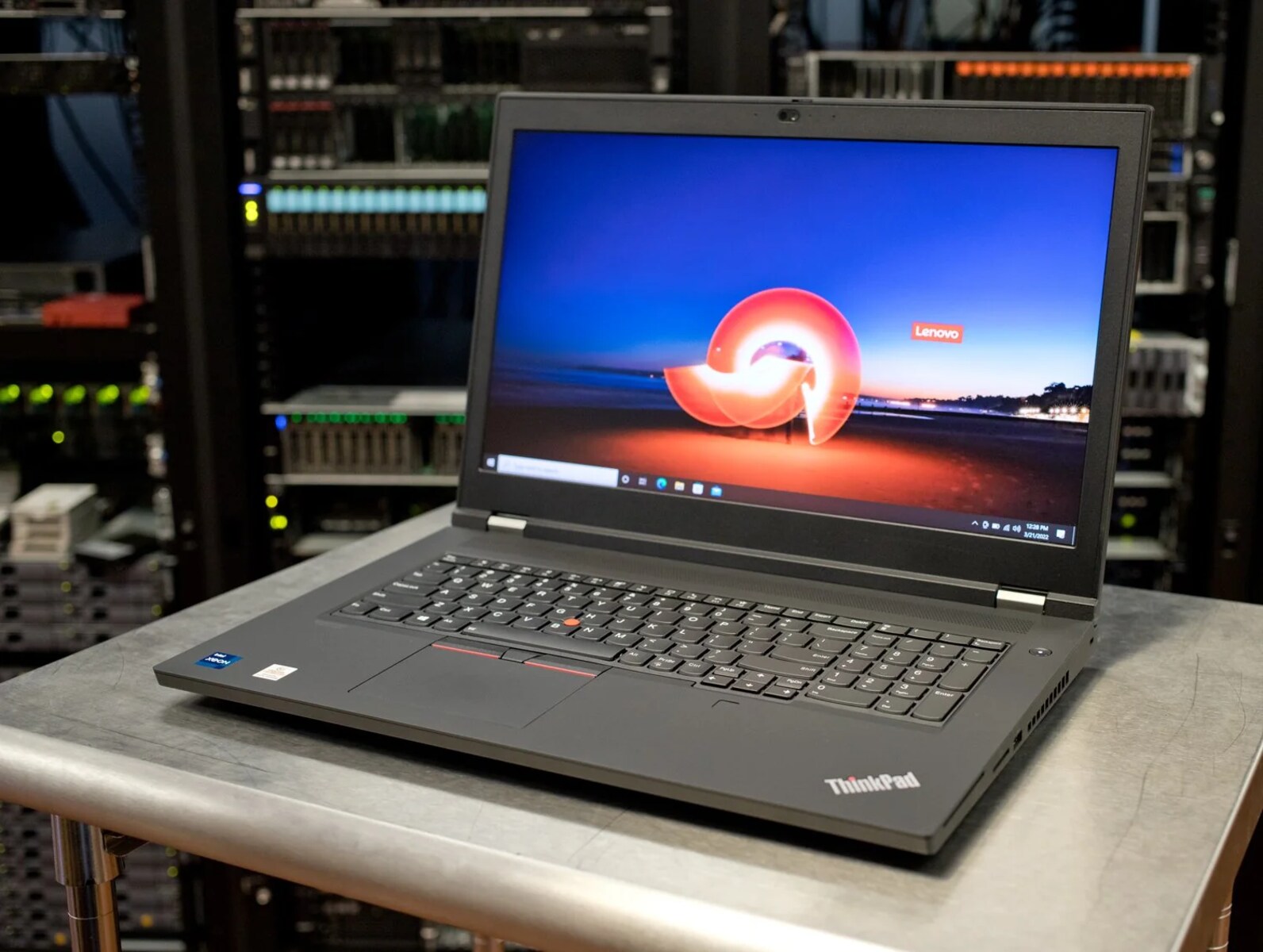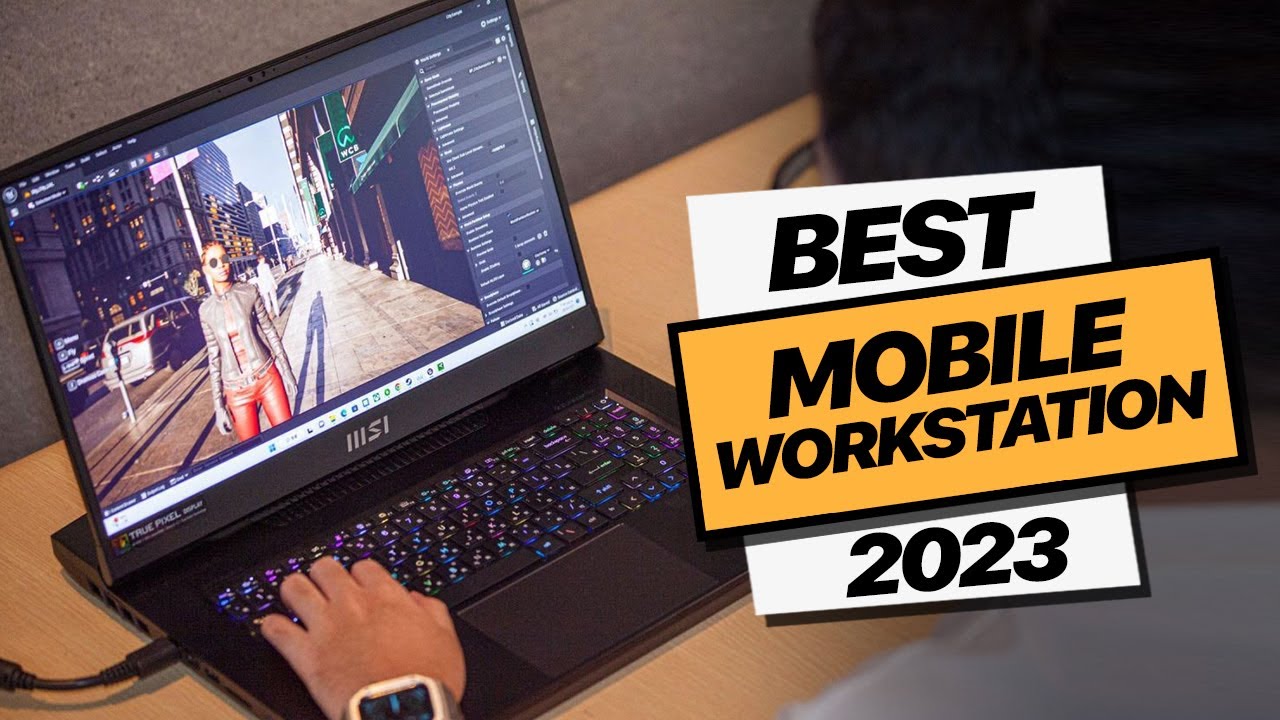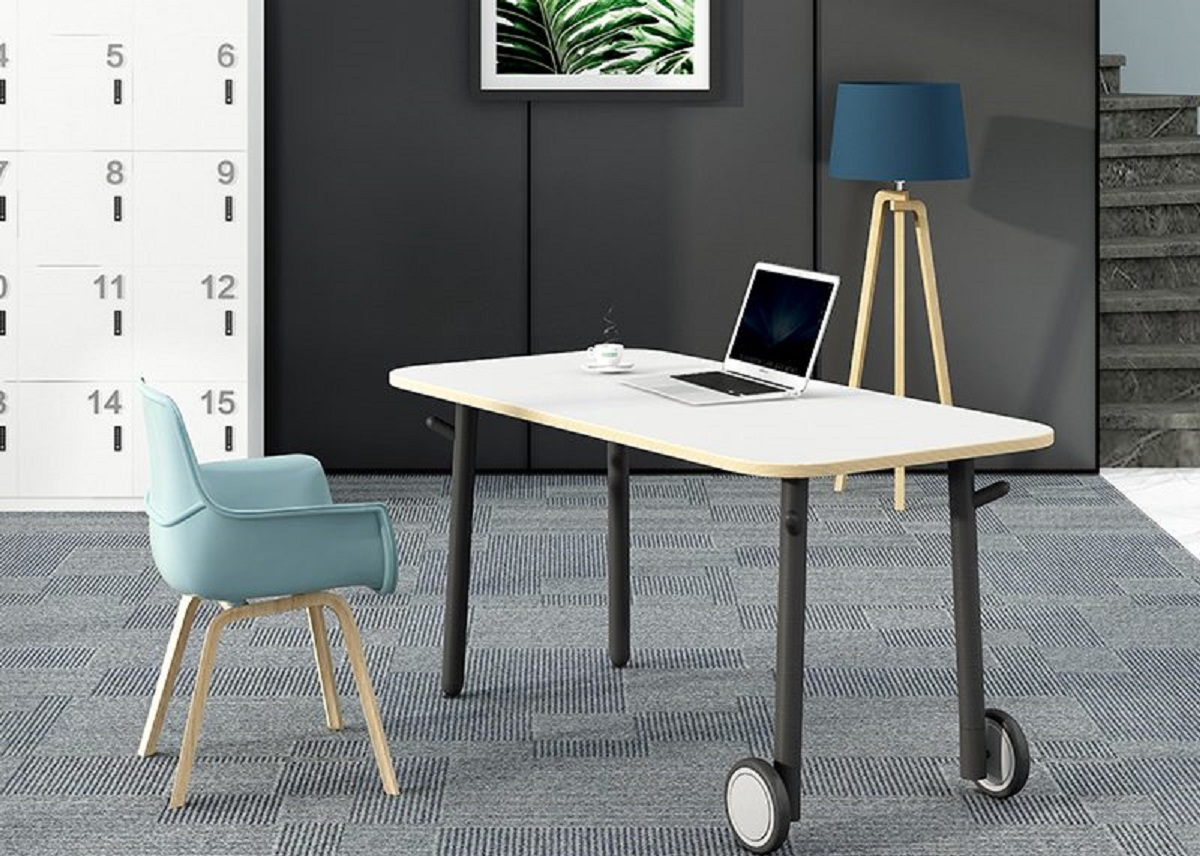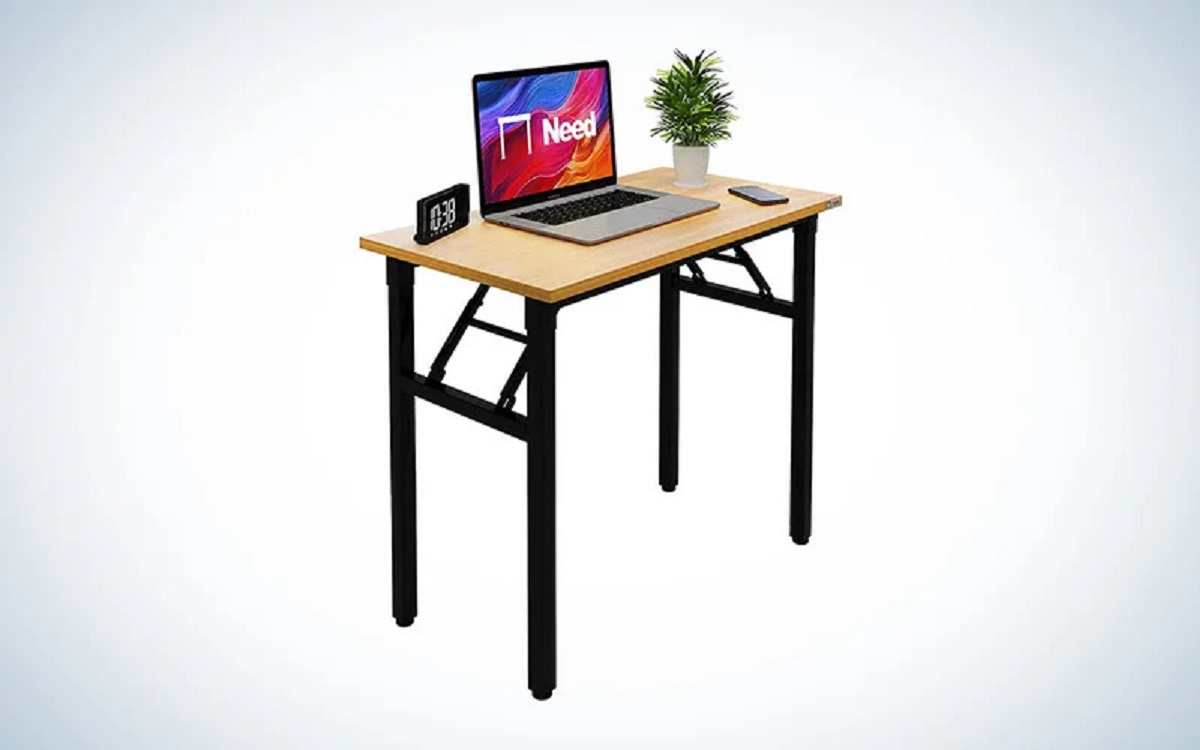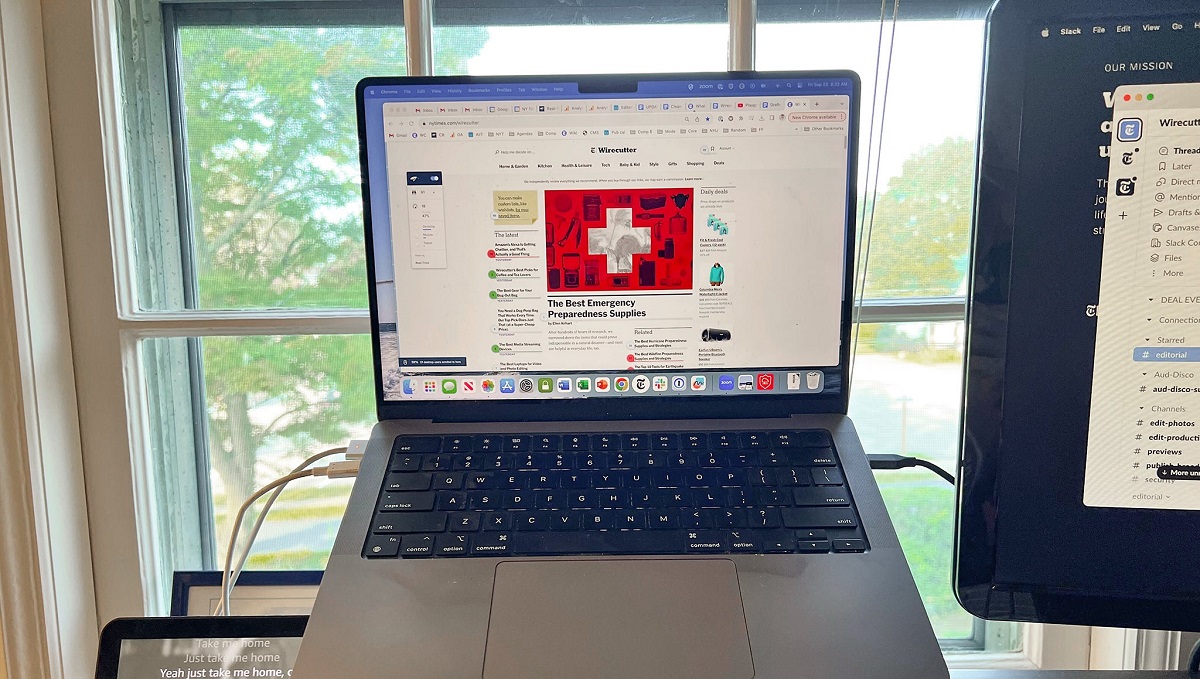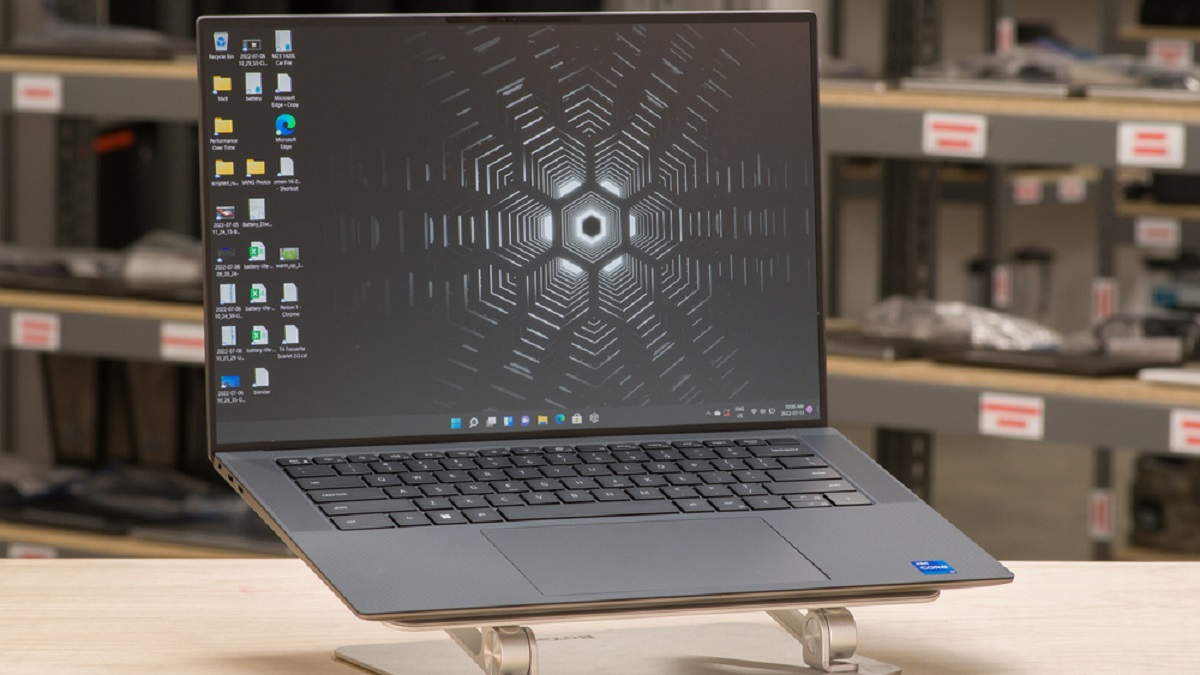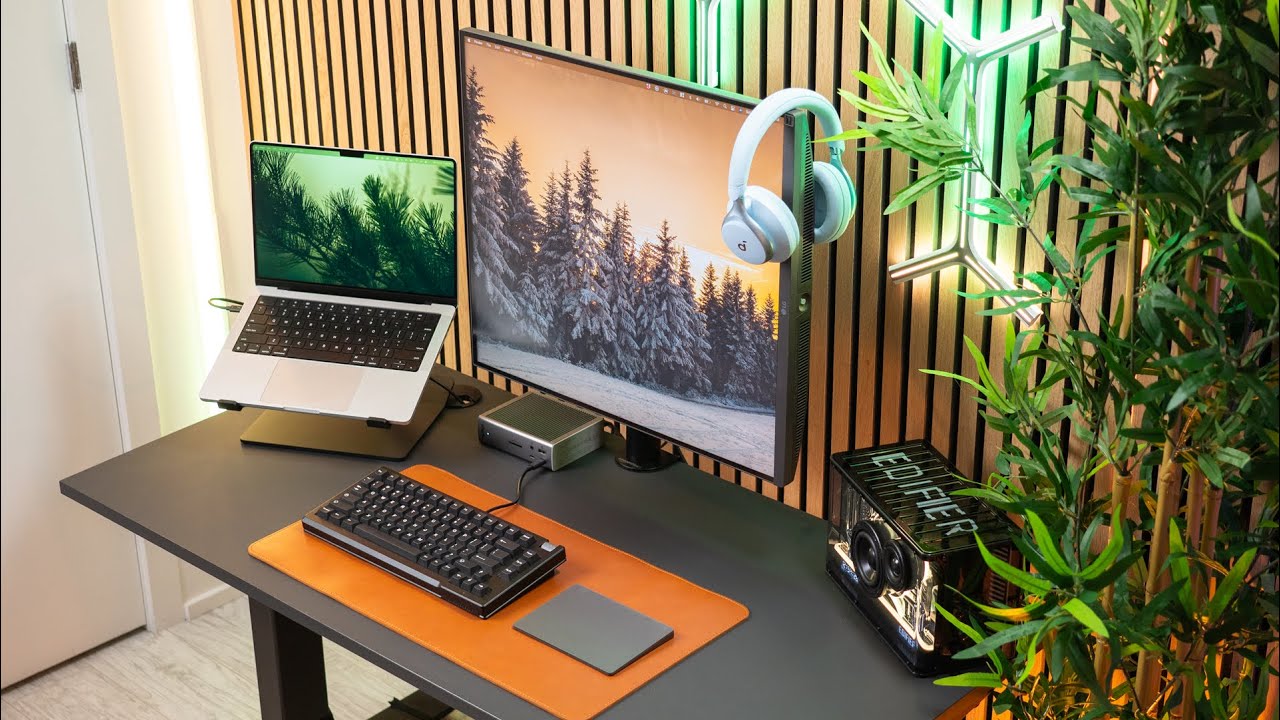Introduction
A mobile workstation has become an essential tool for professionals who require powerful computing capabilities on the go. In today’s fast-paced world, where flexibility and productivity are paramount, having the ability to carry your workstation with you is a game-changer. Whether you are a creative professional, an architect, an engineer, or a data analyst, a mobile workstation can provide the computing power and performance you need to tackle complex tasks and meet tight deadlines.
A mobile workstation is a portable computer specifically designed to handle resource-intensive applications and demanding workloads. Unlike traditional laptops, which prioritize portability and battery life, mobile workstations offer cutting-edge processing power, ample storage, and high-resolution displays. They are equipped with advanced graphics cards, fast processors, and generous amounts of RAM, enabling professionals to run complex simulations, render 3D graphics, edit videos, and handle large datasets with ease.
The advantages of having a mobile workstation are abundant. Professionals who are constantly on the move can stay productive even when they are away from their office or studio. They can work on projects, review designs, and collaborate with team members from any location, ensuring that important deadlines are met. Additionally, a mobile workstation provides the flexibility to work in different environments, whether it’s a client’s office, a co-working space, or a coffee shop.
When considering a mobile workstation, there are certain key features to keep in mind. The processor speed and type play a crucial role in determining the overall performance of the workstation. Opting for a workstation with a high-end processor will ensure smooth multitasking and faster data processing. Storage capacity is another important factor to consider, as it will determine the amount of data you can store on your workstation. SSDs (Solid State Drives) are recommended for faster boot times and data access.
Definition of a Mobile Workstation
In simple terms, a mobile workstation is a portable computer specifically designed to meet the performance and computing needs of professionals working in demanding fields. It is a powerful tool that offers the processing power and capabilities of a desktop workstation, while also providing the convenience and portability of a laptop.
Mobile workstations are built to handle resource-intensive tasks that require significant computing power. They are equipped with high-performance processors, large amounts of RAM, and advanced graphics cards, allowing professionals to work seamlessly on complex projects such as 3D modeling, video editing, CAD/CAM, simulations, and data analysis.
Unlike regular laptops or consumer-grade computers, mobile workstations are designed with durability and reliability in mind. They often come with reinforced construction, ruggedized features, and enhanced cooling systems to ensure optimal performance even in demanding work environments. They are built to withstand the rigors of frequent travel, making them ideal for professionals who work on-site, travel frequently, or need to collaborate with remote teams.
Another defining feature of mobile workstations is their compatibility with professional software applications. These workstations are certified to run specialized software commonly used in industries such as engineering, architecture, graphic design, media production, and scientific research. This guarantees that professionals can rely on their mobile workstations to run critical software smoothly and efficiently, without any compatibility issues or performance limitations.
The display quality is also a crucial aspect of a mobile workstation. They typically offer high-resolution screens with accurate color reproduction, allowing professionals to visualize their work with precision and detail. This is especially important for tasks that require precise color grading, image editing, or working with intricate design elements.
Connectivity options are another essential component of a mobile workstation. They are equipped with a variety of ports and interfaces to facilitate seamless integration with peripherals such as external displays, storage devices, printers, or specialized input devices.
Advantages of a Mobile Workstation
A mobile workstation offers numerous advantages to professionals in various industries. Here are some of the key benefits:
- Portability: The primary advantage of a mobile workstation is its portability. Unlike traditional desktop workstations, which are fixed to a specific location, a mobile workstation allows professionals to work from anywhere. Whether you are on-site with a client, traveling for business, or simply want to work from a different location, a mobile workstation provides the flexibility to work on your projects wherever you go.
- Powerful Performance: Mobile workstations are designed to handle resource-intensive tasks with ease. With high-performance processors, ample RAM, and dedicated graphics cards, they can effortlessly handle demanding applications, such as 3D modeling, video editing, and data analysis. This allows professionals to work efficiently and complete projects quickly, even while on the move.
- Reliability: Mobile workstations are built to be durable and reliable. They are designed to withstand the rigors of frequent travel and are often built with reinforced construction and ruggedized features. This ensures that they can handle the demands of professionals who work in challenging environments and need a workstation that can withstand the wear and tear of daily use.
- Specialized Software Compatibility: Mobile workstations are certified to run specialized software applications commonly used in professional fields such as engineering, architecture, graphic design, and scientific research. This means professionals can rely on their mobile workstations to run critical software smoothly and efficiently without any compatibility issues or performance limitations.
- Enhanced Connectivity: Mobile workstations come equipped with a range of connectivity options. This allows professionals to easily connect their workstation to external displays, storage devices, printers, and other peripherals. This flexibility enables professionals to create a personalized and efficient workstation setup, tailored to their specific needs.
- Collaboration: Being able to work on the same projects and collaborate with team members is crucial for many professionals. Mobile workstations enable professionals to share files, review designs, and collaborate with colleagues, no matter where they are located. This promotes efficient teamwork, improves productivity, and ensures that important deadlines are met.
Overall, the advantages of a mobile workstation make it an indispensable tool for professionals who require high-performance computing capabilities while maintaining the flexibility to work from anywhere.
Key Features to Consider
When choosing a mobile workstation, there are several key features that you should consider to ensure that it meets your specific needs. These features will determine the performance, functionality, and overall user experience of the workstation. Here are some important features to pay attention to:
- Processor: The processor is the heart of any computer system, including mobile workstations. Look for a workstation with a powerful and efficient processor, such as an Intel Core i7 or i9 processor, to ensure smooth multitasking and speedy performance.
- Graphics Card: If you work with graphics-intensive applications, look for a mobile workstation with a dedicated graphics card. This will ensure smooth rendering, faster graphics processing, and better performance in tasks like 3D modeling, video editing, and CAD/CAM.
- RAM: Adequate RAM is crucial for multitasking and running memory-intensive applications. Consider a workstation with at least 16GB of RAM, or more if you work with large datasets or complex simulations.
- Storage: A mobile workstation should have sufficient storage space to accommodate your files and projects. Look for a workstation with a fast Solid State Drive (SSD) for quick boot times and efficient data access. Consider the storage capacity you need, whether it’s a 512GB, 1TB, or larger.
- Display: The quality of the display is important, especially if you work with visual content. Look for a workstation with a high-resolution display and accurate color reproduction. A larger screen size, such as 15.6 inches or 17 inches, can also enhance your viewing experience.
- Connectivity: Consider the available ports and connectivity options. Look for a workstation with USB 3.0 or USB Type-C ports, HDMI or DisplayPort for external display connectivity, and an SD card reader if you frequently work with memory cards.
- Battery Life: If you need to work on the go, battery life is a crucial consideration. Look for a mobile workstation with a long-lasting battery that can sustain your workday without frequent recharging.
- Weight and Portability: If you travel frequently or need to carry your workstation to different locations, consider the weight and portability. Look for a lightweight and compact workstation that is easy to carry without compromising on performance.
By considering these key features, you can choose a mobile workstation that aligns with your specific requirements and ensures optimal performance for your work.
Popular Brands of Mobile Workstations
When it comes to mobile workstations, there are several well-known brands that offer reliable and high-performance options. These brands have established themselves as leaders in the industry and are trusted by professionals in various fields. Here are some of the most popular brands of mobile workstations:
- HP: HP is one of the leading manufacturers of mobile workstations. Their ZBook series offers a range of powerful and customizable mobile workstations that cater to the needs of different professionals. HP workstations are known for their robust performance, durable build quality, and innovative features.
- Dell: Dell is another prominent brand when it comes to mobile workstations. The Precision series from Dell is highly regarded for its reliability, performance, and precision engineering. Dell workstations offer a combination of powerful processors, top-notch graphics options, and exceptional display quality.
- Lenovo: Lenovo’s ThinkPad P series is widely recognized as a reliable and high-performance mobile workstation lineup. Lenovo workstations are known for their excellent build quality, superior keyboards, and impressive durability. They offer a range of configuration options to meet the specific needs of professionals across different industries.
- Apple: Apple’s MacBook Pro is a popular choice among creative professionals. With powerful processors, stunning Retina displays, and the macOS ecosystem, MacBook Pro workstations deliver exceptional performance for tasks such as video editing, graphic design, and music production.
- MSI: MSI is well-known for its gaming laptops, but they also offer powerful mobile workstations that cater to professionals. The MSI mobile workstations provide top-notch performance, high-quality displays, and impeccable graphics capabilities for professionals working in demanding fields.
These are just a few examples of the popular brands of mobile workstations. It’s important to research and compare the specific models and configurations offered by each brand to ensure that you choose a workstation that best suits your needs and preferences.
Differences Between Mobile Workstations and Laptops
While mobile workstations and laptops may seem similar at first glance, there are key differences that set them apart. These differences determine their suitability for specific tasks and the intended user demographics. Here are the main distinctions between mobile workstations and laptops:
- Performance: Mobile workstations are designed to deliver exceptional performance for resource-intensive tasks. They are equipped with powerful processors, generous amounts of RAM, and dedicated graphics cards, allowing professionals to handle demanding applications like 3D modeling, video editing, and CAD/CAM. Laptops, on the other hand, are generally more focused on portability and battery life, sacrificing some processing power for enhanced mobility.
- Graphics Capabilities: Mobile workstations often boast dedicated graphics cards that offer better performance and rendering capabilities compared to laptops. These dedicated graphics cards are crucial for professionals who work with graphics-intensive applications, as they enable smooth rendering, faster graphics processing, and accurate color reproduction.
- Software Compatibility: Mobile workstations are typically certified to run specialized software commonly used in professional fields such as engineering, architecture, and graphic design. This ensures compatibility and optimized performance when working with the industry-standard software. While some laptops may be capable of running these applications, they may not have the same level of optimization and certification that mobile workstations offer.
- Build Quality: Mobile workstations are generally built to withstand harsher conditions and more robust usage. They often feature reinforced construction, additional durability features, and enhanced cooling systems to handle demanding workloads. Laptops, while still durable, may not have the same level of durability and ruggedness as mobile workstations.
- Display Quality: Mobile workstations typically offer higher-quality displays with better resolution, color accuracy, and viewing angles. This is important for professionals who work with visual content and require precise color grading or detailed image editing. Laptops may have good displays, but they may not match the color accuracy and resolution offered by mobile workstations.
- Expandability: Mobile workstations usually offer more options for expandability compared to laptops. They often have additional ports and slots for connecting external devices, upgrading components like storage and memory, and customizing the workstation to suit specific needs. Laptops, due to their compact design, generally have limited options for expandability.
Understanding these differences can help professionals determine whether a mobile workstation or a laptop is better suited to their specific needs. Mobile workstations are ideal for professionals who require exceptional performance, graphics capabilities, and extensive software compatibility. Laptops, on the other hand, are better suited for general computing tasks, portability, and everyday use.
Choosing the Right Mobile Workstation for Your Needs
When selecting a mobile workstation, it’s important to consider your specific needs and requirements to ensure that you choose the right one. Here are some factors to consider when making your decision:
- Performance Requirements: Assess the nature of your work and determine the level of performance you need from a mobile workstation. Consider the types of applications you’ll be using and the complexity of the tasks you perform. This will help you determine the necessary specifications such as processor speed, graphics capabilities, and amount of RAM.
- Software Compatibility: If you work with specialized software applications, ensure that the mobile workstation you choose is certified to run those applications. Verify the system requirements of your software and match them with the specifications of the workstation to ensure optimal performance and compatibility.
- Portability: Evaluate your mobility needs and determine how frequently you’ll be traveling with your mobile workstation. Consider factors such as weight, size, and battery life. If you frequently move between work locations, you may prioritize a lightweight and compact workstation with long battery life for maximum portability.
- Display Quality: If your work involves visual content or requires color accuracy, pay attention to the display quality. Look for a workstation with a high-resolution display, good color reproduction, and wide viewing angles. Consider screen size as well, as larger screens may enhance your productivity and user experience.
- Storage and Memory: Evaluate your storage and memory requirements based on the size of your files and the complexity of your projects. Consider the speed and capacity of the storage drive (preferably SSD) and the amount of RAM required to handle your workload efficiently.
- Connectivity Options: Assess the connectivity options of the mobile workstation. Ensure that it has the necessary ports and interfaces to connect your external devices, such as displays, storage drives, or specialized peripherals. Consider the availability of USB ports, HDMI or DisplayPort, Thunderbolt, and Ethernet ports depending on your specific needs.
- Budget: Determine your budget range beforehand and consider the value provided by different workstations within that range. Remember that investing in a workstation with better specifications may result in improved performance and longevity, but it is important to strike a balance between your requirements and budget.
By taking these factors into consideration, you can choose a mobile workstation that aligns perfectly with your needs and provides the necessary performance, features, and portability to enhance your productivity and meet your professional goals.
Importance of Workstation Accessories
Workstation accessories play a crucial role in enhancing the functionality, comfort, and productivity of professionals using mobile workstations. These accessories are designed to complement and optimize the performance of the workstation, providing additional features and convenience. Here are some important reasons why workstation accessories are important:
- Ergonomics and Comfort: Workstation accessories such as ergonomic keyboards, mice, and monitor stands are designed to promote better posture, reduce strain, and increase overall comfort during long hours of work. They can help prevent repetitive strain injuries and musculoskeletal disorders by promoting proper alignment and reducing stress on the body.
- Connectivity and Expandability: Workstation accessories like docking stations and port replicators provide additional connectivity options and expandability to mobile workstations. They allow professionals to connect to multiple monitors, external storage devices, peripherals, and network connections with ease, effectively turning the mobile workstation into a full-fledged desktop setup.
- Display Enhancements: Accessories such as external monitors, calibration tools, and glare filters can significantly improve the visual experience and accuracy of color-critical work. An external monitor with a larger screen can provide additional workspace, while calibration tools ensure consistent and accurate color representation. Glare filters reduce eye strain and minimize reflections, particularly in brightly lit environments.
- Data Security and Privacy: Privacy screens or filters are important accessories that help protect sensitive information by limiting the visibility of the screen to the user. These accessories prevent snooping and unauthorized access to confidential data, making them essential for professionals who handle sensitive information or work in public spaces.
- Storage and Backup: External storage devices, such as portable hard drives and solid-state drives (SSDs), are essential accessories for backing up important files and ensuring data security. Additional storage options provide professionals with ample space to store large files and projects, reducing the reliance on the internal storage of the mobile workstation.
- Audio and Communication: Accessories like high-quality headphones, microphones, and webcams are essential for professionals who need clear audio and video during conference calls, virtual meetings, or multimedia tasks. Noise-canceling headphones and external microphones help filter out background noise and ensure crisp audio, while webcams with better resolution enhance video quality for remote collaboration.
- Power and Charging: Portable chargers, additional power adapters, and surge protectors are important accessories for professionals who are frequently on the move. These accessories provide peace of mind by ensuring uninterrupted power supply, protecting the mobile workstation from power surges, and extending battery life when access to a power source is limited.
Investing in the right workstation accessories can greatly improve the user experience, productivity, and functionality of a mobile workstation. They provide comfort, connectivity, data security, and additional features that enable professionals to work efficiently and effectively in any setting.
Tips for Maximizing Performance and Efficiency
Maximizing the performance and efficiency of your mobile workstation is essential for staying productive and achieving optimal results. Here are some useful tips to help you get the most out of your mobile workstation:
- Regular Maintenance: Keep your mobile workstation running smoothly by performing regular maintenance tasks. This includes updating your operating system and drivers, running disk cleanup and defragmentation, and periodically checking for malware or viruses.
- Optimize Workstation Settings: Customize your workstation settings to ensure optimal performance. Adjust power settings to balance battery life and performance based on your needs. Tweak display settings to optimize for color accuracy and visibility.
- Utilize Shortcut Keys: Take advantage of shortcut keys and keyboard shortcuts to streamline your workflow. Learn the most commonly used commands and functions for your applications to work more efficiently and save time.
- Organize Your Files and Folders: Keep your files and folders organized to improve efficiency and productivity. Utilize a logical folder structure and employ file naming conventions that make it easy to locate and retrieve documents when needed.
- Backup Your Data Regularly: Protect your valuable data by implementing a backup strategy. Utilize cloud storage solutions or external storage devices to regularly back up important files, ensuring that you can recover data in case of any unforeseen incidents.
- Optimize Software and Application Usage: Close unnecessary applications and processes when not in use to free up system resources. Avoid running multiple resource-intensive applications simultaneously to prevent performance bottlenecks.
- Keep Your Workstation Cool: Overheating can lead to decreased performance and potential hardware issues. Ensure proper ventilation and use cooling pads or fans to keep your workstation temperature in check, especially during intensive tasks.
- Maintain a Clean Workspace: A clutter-free workspace promotes focus and efficiency. Keep your work area clean and organized, minimizing distractions and allowing you to fully concentrate on your tasks at hand.
- Stay Up-to-Date: Keep your software applications, drivers, and firmware up-to-date to benefit from performance enhancements, bug fixes, and security patches. Set up automatic updates where possible to ensure you are always running the latest and most optimized versions.
- Invest in Quality Accessories: Choose high-quality workstation accessories that enhance your productivity and comfort. This includes ergonomic keyboards and mice, external displays, and adjustable stands. Select accessories that are specifically designed for professional use and complement your mobile workstation.
By implementing these tips, you can maximize the performance and efficiency of your mobile workstation, enabling you to work more effectively and achieve your professional goals.
Conclusion
A mobile workstation is an indispensable tool for professionals who require powerful computing capabilities and flexibility in their work. With their advanced processing power, dedicated graphics, and robust performance, mobile workstations enable professionals to tackle resource-intensive tasks with ease.
Throughout this article, we have explored the definition and advantages of mobile workstations, discussed key features to consider, highlighted popular brands in the market, and outlined the differences compared to regular laptops. We have also provided guidance on choosing the right mobile workstation for your needs, discussed the importance of workstation accessories, and shared tips for maximizing performance and efficiency.
By selecting a mobile workstation that aligns with your specific requirements and taking advantage of accessories and optimization techniques, you can take your productivity and professional performance to new heights. From architects to engineers, from graphic designers to data analysts, mobile workstations offer the power, portability, and reliability needed to stay productive in today’s fast-paced work environment.
Remember to assess your performance requirements, consider software compatibility, and evaluate factors like portability, display quality, and connectivity options before making a decision. Regular maintenance, organization, and backups are key to keeping your mobile workstation running smoothly and protecting your important data.
In conclusion, investing in a high-quality mobile workstation, along with the right accessories and optimization strategies, is crucial for professionals who demand exceptional performance, reliability, and flexibility in their work. With the right tools at your disposal, you can unleash your creativity, meet deadlines, and excel in your professional endeavors.







